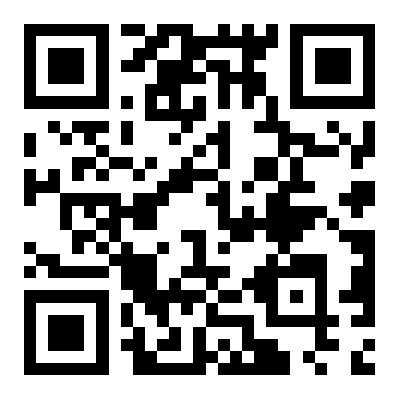Safety and Compliance of Power Sockets: Interpretation of International Standards and Design Practic
2025-02-24 10:53:32
Power sockets, as critical interfaces for power transmission, directly impact user safety, property security, and the normal operation of equipment. With the continuous expansion of global markets, the design and production of power sockets must comply with regulations in different countries and regions. This white paper provides an in-depth interpretation of major international certification standards (such as UL, CE, CCC, RoHS, etc.), explores key technical details in safety design, analyzes compliance challenges, and demonstrates how to successfully achieve certification through real-world cases. Finally, we offer practical advice for B2B clients on selecting compliant power socket products.
Chapter 1: Overview of International Certification Standards
1.1 UL Certification (United States)
UL (Underwriters Laboratories) is one of the most authoritative safety certification bodies in the United States, focusing on product safety performance testing.
Scope of Application: Primarily for the North American market (USA, Canada).
Core Requirements:
Electrical Safety: Ensures stable operation of sockets under rated current and voltage.
Fire Resistance: Uses flame-retardant materials to prevent overheating and fire hazards.
Mechanical Strength: Sockets must withstand a certain number of plugging and unplugging cycles (typically over 10,000 times).
Case Study: A U.S. construction project required all power sockets to be UL-certified to comply with local fire safety regulations.
1.2 CE Certification (Europe)
CE (Conformité Européenne) is a mandatory certification mark in the European Union, indicating compliance with EU safety, health, and environmental protection requirements.
Scope of Application: EU member states and some countries recognizing the CE mark.
Core Requirements:
Low Voltage Directive (LVD): Ensures electrical equipment operates within safe voltage ranges.
Electromagnetic Compatibility (EMC): Prevents sockets from generating or being affected by electromagnetic interference.
RoHS Directive: Restricts the use of hazardous substances (e.g., lead, mercury, cadmium).
Case Study: A European hotel project required CE-certified sockets to ensure legal sales and use within the EU.
1.3 CCC Certification (China)
CCC (China Compulsory Certification) is a mandatory product certification system in China, covering various product categories.
Scope of Application: Chinese market.
Core Requirements:
Electrical Safety: Compliance with GB standards to ensure socket stability under extreme conditions (e.g., high temperature, humidity).
Durability: Sockets must withstand over 5,000 plugging and unplugging cycles.
Child Safety: Sockets must feature safety shutters.
Case Study: A Chinese real estate developer required all sockets to be CCC-certified to meet national mandatory standards.
1.4 RoHS Certification (Global)
RoHS (Restriction of Hazardous Substances) is an international standard restricting hazardous substances.
Scope of Application: Global markets, especially the EU.
Core Requirements:
Restricts six hazardous substances: Lead (Pb), Mercury (Hg), Cadmium (Cd), Hexavalent Chromium (Cr6+), Polybrominated Biphenyls (PBB), and Polybrominated Diphenyl Ethers (PBDE).
Eco-Friendly Materials: Uses halogen-free and lead-free materials.
Case Study: A global hotel chain required all sockets to comply with RoHS standards to reflect its environmental commitment.
Chapter 2: Key Technical Details in Safety Design
2.1 Fire Resistance Design
Flame-Retardant Materials: Uses UL94 V-0 rated materials to prevent combustion under high temperatures.
Overheat Protection: Built-in temperature sensors automatically cut off power when temperatures exceed safe thresholds.
Case Study: A high-end office building project used flame-retardant sockets, successfully passing fire safety inspections.
2.2 Electric Shock Protection Design
Insulation Materials: Uses high-insulation materials to prevent current leakage.
Safety Shutters: Prevents children from inserting objects, reducing the risk of electric shock.
Grounding Protection: Ensures proper grounding to prevent electric leakage accidents.
Case Study: A hospital project adopted sockets with safety shutters, significantly reducing the risk of child electric shocks.
2.3 Lightning Strike Protection Design
Surge Protection: Built-in surge protectors (SPDs) prevent damage from lightning strikes or voltage fluctuations.
Case Study: A data center project used surge-protected sockets, effectively safeguarding server equipment.
Chapter 3: Compliance Challenges and Solutions
3.1 Regional Regulatory Differences
Voltage Standards: USA (120V), Europe (230V), China (220V).
Plug Types: USA (Type A/B), Europe (Type C/F), China (Type A/C/I).
Solution: Designs modular sockets supporting multiple plug types and voltage standards.
3.2 Certification Costs and Cycles
Challenge: High certification costs and long cycles.
Solution: Plans certification processes in advance and selects experienced certification bodies.
3.3 Environmental Requirements
Challenge: RoHS and other environmental standards impose higher material requirements.
Solution: Establishes long-term partnerships with eco-friendly material suppliers to ensure compliance.
Chapter 4: Real-World Case Study
4.1 Case Background
An international hotel chain planned to upgrade its power socket system globally, requiring compliance with UL, CE, CCC, RoHS, and other certifications.
4.2 Solution
Designed multifunctional sockets supporting multiple plug types and voltage standards.
Used flame-retardant and eco-friendly materials to meet RoHS and fire safety requirements.
Integrated surge protectors to ensure equipment safety.
4.3 Implementation Results
Successfully obtained UL, CE, CCC, and RoHS certifications.
Received positive feedback from hotel clients, reducing equipment failure rates by 30%.
The project became an industry benchmark, attracting more clients.
Chapter 5: Recommendations and Conclusion
5.1 How to Select Compliant Power Socket Products
Define Requirements: Select certification standards based on regional regulations.
Prioritize Safety: Choose products with fire resistance, electric shock protection, and surge protection features.
Select Reliable Suppliers: Ensure suppliers have relevant certifications and production capabilities.
Test and Verify: Conduct rigorous testing before product deployment.
5.2 Conclusion
The safety and compliance of power sockets are critical factors for B2B clients. By understanding international standards, optimizing safety designs, and addressing compliance challenges, companies can provide high-quality, compliant power socket products, gaining a competitive edge in the market.



